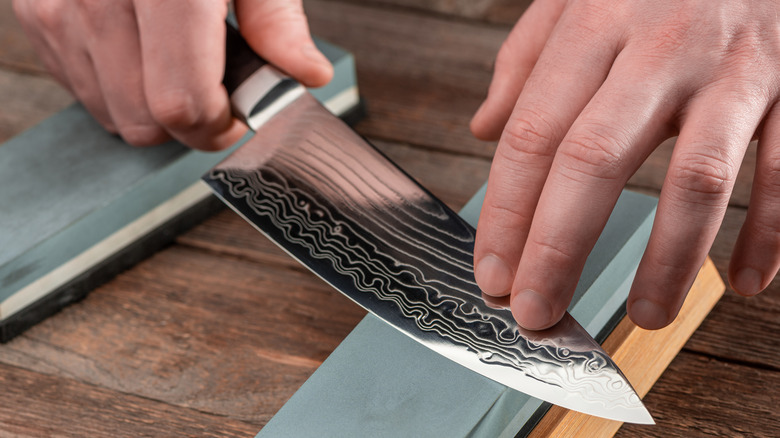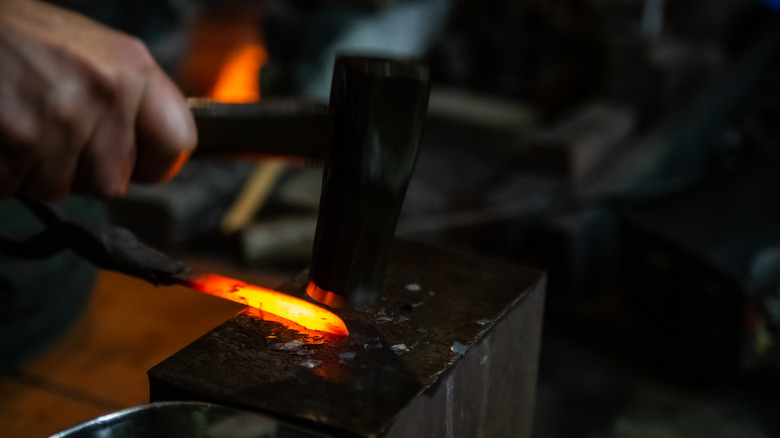The Link Between Samurai Swords And Quality Japanese Cutlery
There is no denying the quality and craftsmanship of Japanese cutlery. Their unparalleled excellence has made them popular additions in home and professional kitchens the world over. According to the Melbourne Food and Wine Festival, the popularity among professional chefs in particular is due to the fact that Japanese-made knives are lightweight, balanced, and maintain their sharp edge far longer than a traditional Western chef's knife. These characteristics make Japanese knives a worthwhile investment — though it can be a substantial one; The Culinary Pro reports there are some custom knives that cost upwards of $20,000.
There is, however, a deeper history that breathes through the steel of every usuba, gyuto, and nakiri knife. The katana, the traditional curved sword of Japanese samurai warriors, is among the most iconic and important bladed weapons ever designed, per Swords of Northshire. During the time of the shogunate, katanas were forged by master swordsmiths trained in traditions dating back over a thousand years.
However, when the period known as the Meiji Restoration began in the late 19th century, the modernization of Japan effectively ended samurai culture and, with it, a genuine need for swords (via Toki). Still, that did not end Japan's blade manufacturing industry. In spite of the fact that their clientele had all but vanished, the swordmasters decided to turn their considerable skills towards crafting the best culinary knives available in today's modern food sphere.
Forging quality blades
Sakai City, the 15th-century city which was once a hub of samurai sword production, is today the epicenter of the Japanese knife industry. The city today produces the long and thin precision cutlery required for making sashimi and sushi. Where Western chef's knives have thick blades with a heavy handle, The Culinary Pro explains Japanese kitchen knives are much thinner, lighter, and more balanced.
It is the quality of the steel, above all, that sets Japanese cutlery apart from its Western counterparts. According to Seisuke Knife, the steel used to make Japanese knives is split into two distinct categories, high carbon and stainless steel. The former, high carbon, is the most common type used in Japan. Like their katana ancestor, high carbon knives are made by repeatedly hammering and folding the iron ore over itself, thereby adding carbon. Blades made of this steel, unsurprisingly, are incredibly strong and will hold their edge. Western knives, on the other hand, are made using far softer steel — which is one of the reasons they need constant resharpening, per Oishya.
In Japan, the chef views the knife as an extension of his arm in much the same way a samurai warrior viewed his sword. Therefore, a chef's knife is intended to be built well and last a lifetime. They are sharpened, fixed, and used until the chef dies or the knife breaks (via Masamoto). Though the culture and the instruments may have changed, the beautiful tradition of blade smithing endures.

